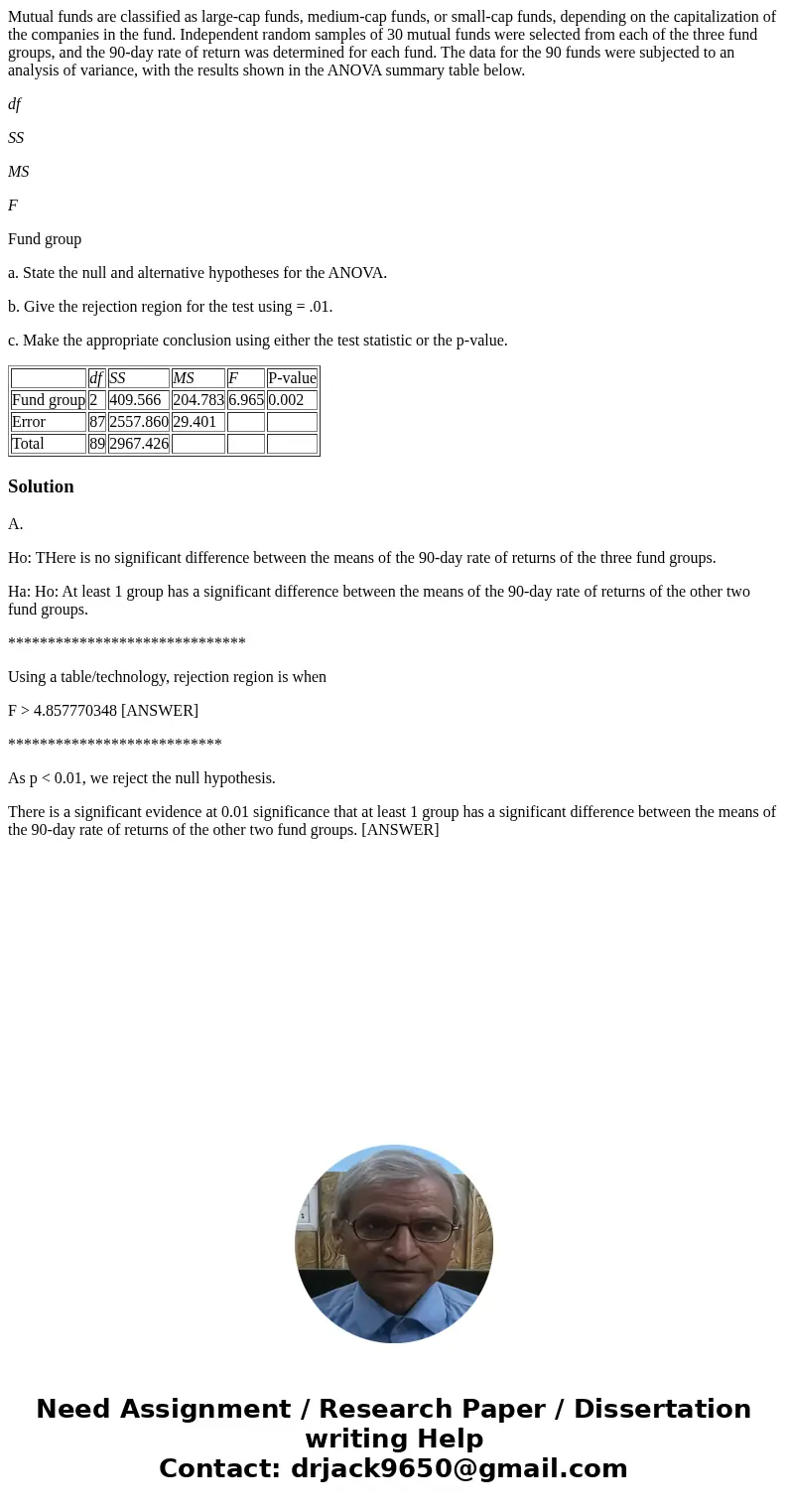Mutual funds are classified as largecap funds mediumcap fund
Mutual funds are classified as large-cap funds, medium-cap funds, or small-cap funds, depending on the capitalization of the companies in the fund. Independent random samples of 30 mutual funds were selected from each of the three fund groups, and the 90-day rate of return was determined for each fund. The data for the 90 funds were subjected to an analysis of variance, with the results shown in the ANOVA summary table below.
df
SS
MS
F
Fund group
a. State the null and alternative hypotheses for the ANOVA.
b. Give the rejection region for the test using = .01.
c. Make the appropriate conclusion using either the test statistic or the p-value.
| df | SS | MS | F | P-value | |
| Fund group | 2 | 409.566 | 204.783 | 6.965 | 0.002 |
| Error | 87 | 2557.860 | 29.401 | ||
| Total | 89 | 2967.426 |
Solution
A.
Ho: THere is no significant difference between the means of the 90-day rate of returns of the three fund groups.
Ha: Ho: At least 1 group has a significant difference between the means of the 90-day rate of returns of the other two fund groups.
******************************
Using a table/technology, rejection region is when
F > 4.857770348 [ANSWER]
***************************
As p < 0.01, we reject the null hypothesis.
There is a significant evidence at 0.01 significance that at least 1 group has a significant difference between the means of the 90-day rate of returns of the other two fund groups. [ANSWER]

 Homework Sourse
Homework Sourse